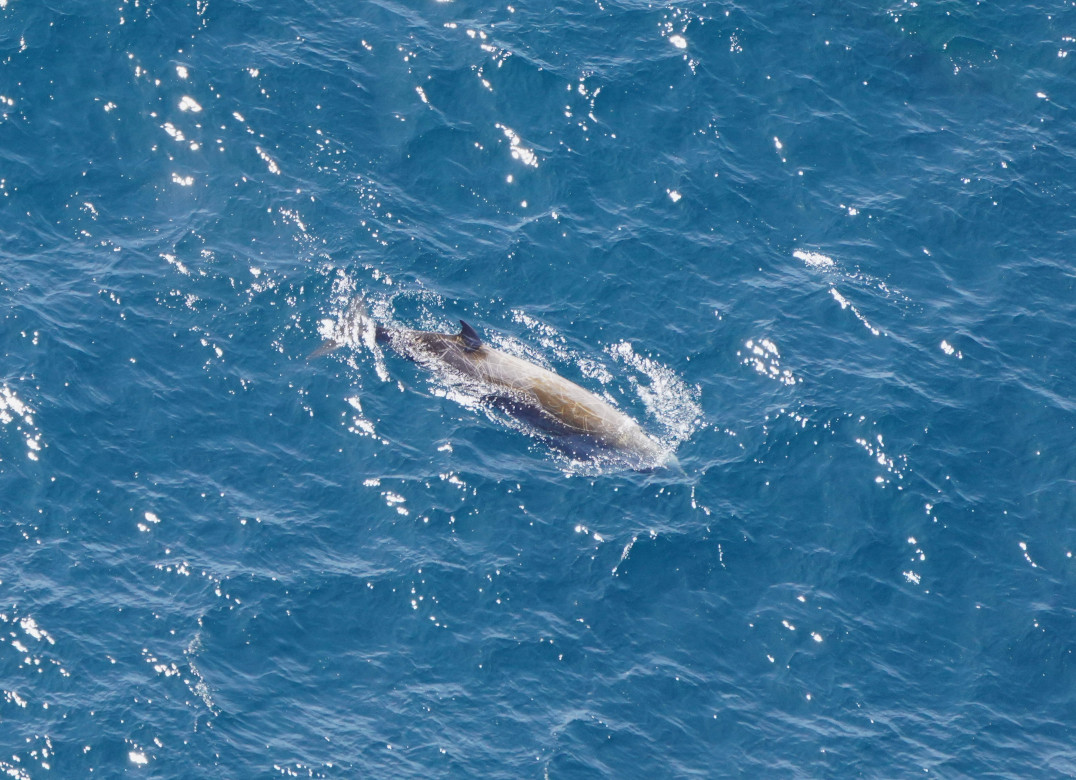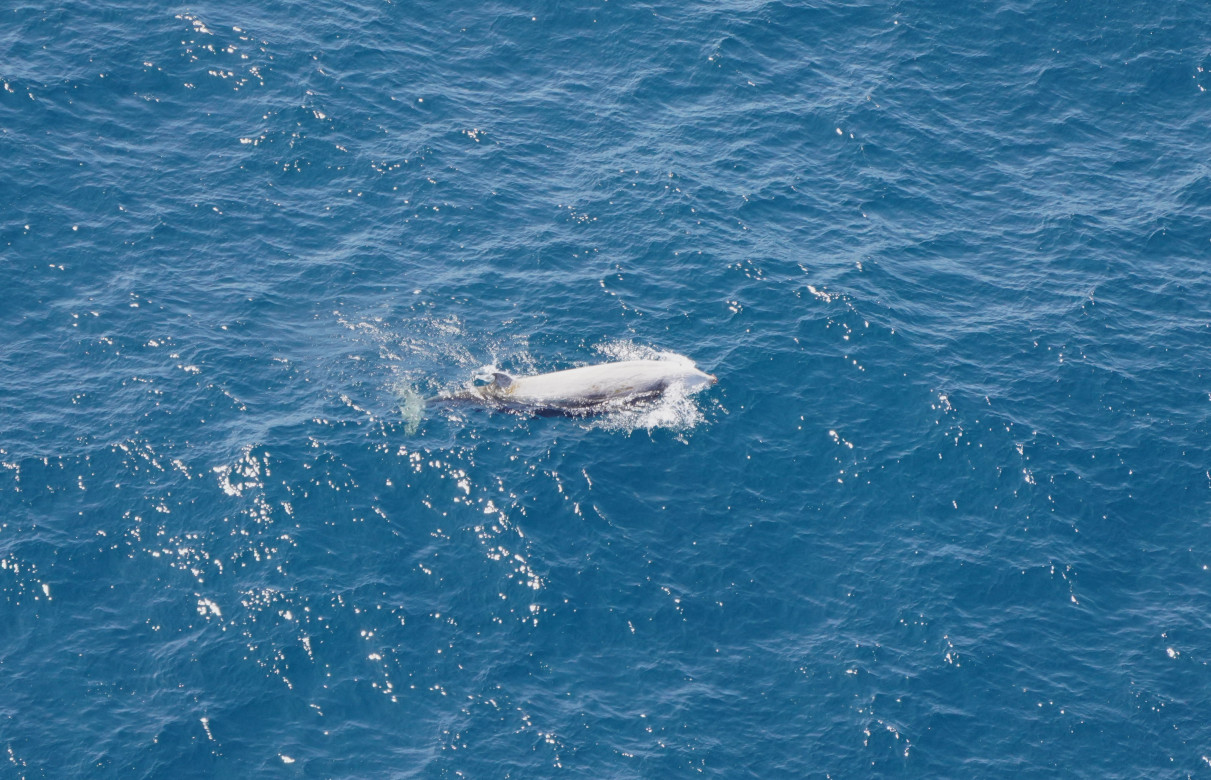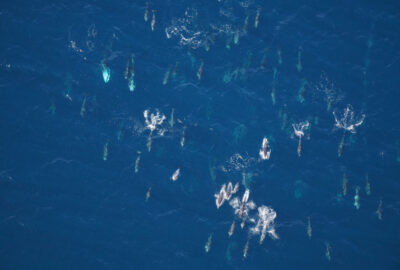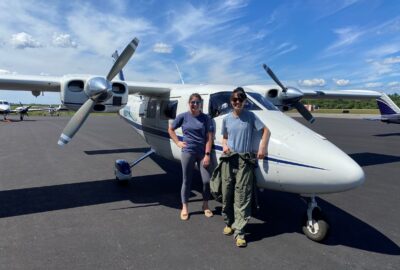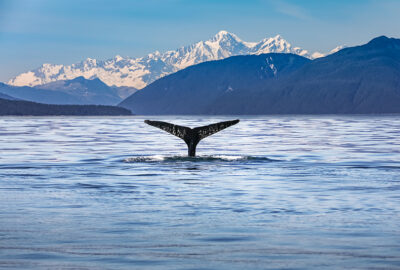Spring Productivity Draws Large Numbers of Diverse Whales to Marine Monument
In their first-ever May survey, our aerial survey team spotted many different whale species in the Northeast Canyons and Seamounts Marine National Monument and surrounding waters.
By New England Aquarium on Friday, June 23, 2023

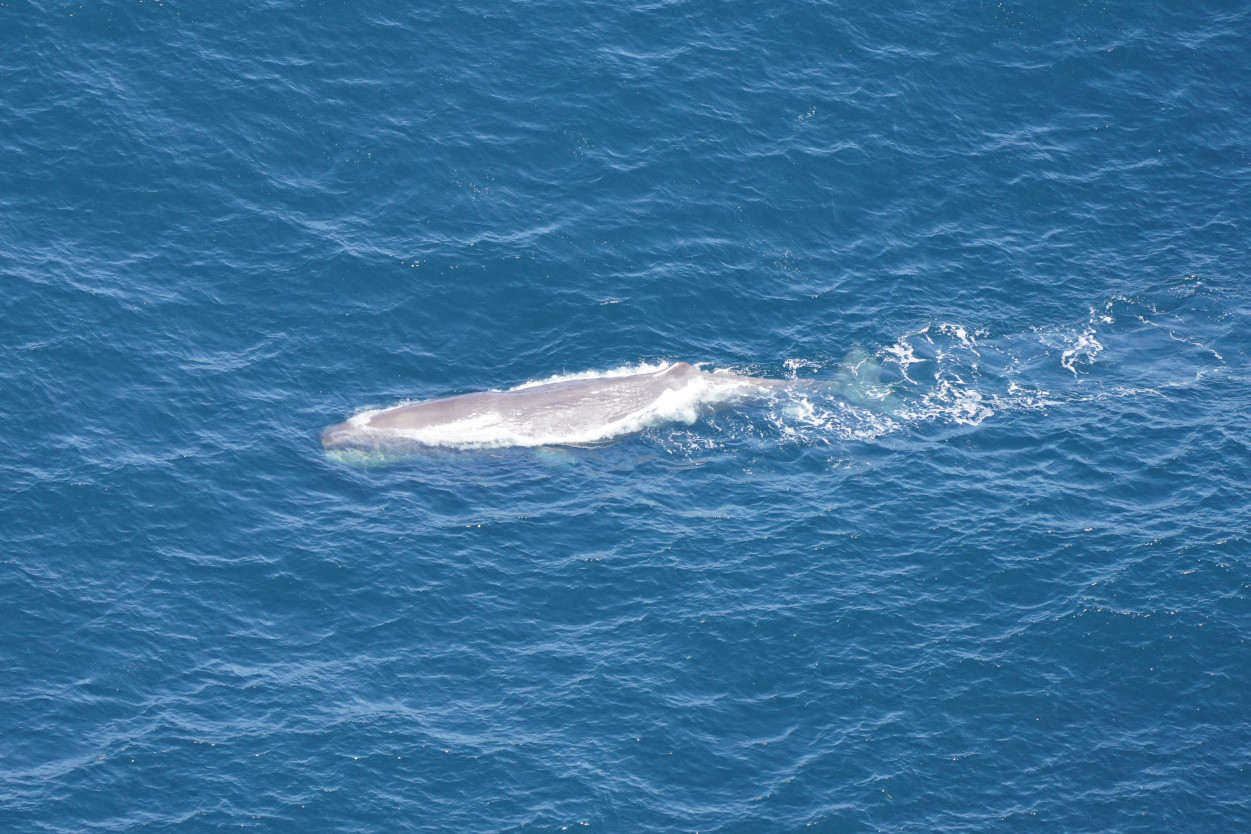
A few weeks after our April survey of the Northeast Canyons and Seamounts Marine National Monument, we were fortunate enough to fly another survey—only our third spring Monument flight in seven years. Spring can be particularly challenging for Monument flights due to the wind and fog that can form in the area. Having the opportunity to complete two spring flights this year provides valuable data that can help us understand how and when species are utilizing the Monument.

For this survey, we started our tracklines four miles west of the Canyons unit of the Monument. Almost immediately upon starting the first trackline, we were surrounded by whales and dolphins on either side of the plane! Among the dozens of humpback whales (Megaptera novaeangliae) and hundreds of common dolphins (Delphinus delphis), we were delighted to spot two critically endangered North Atlantic right whales (Eubalaena glacialis). These whales and dolphins were likely feeding given the frequent dives, multidirectional swimming at the surface, and high concentration of animals in this area. While we have occasionally seen right whales on our transits to and from the Monument, the sightings on this flight were the closest to the Monument that our surveys have documented right whales!
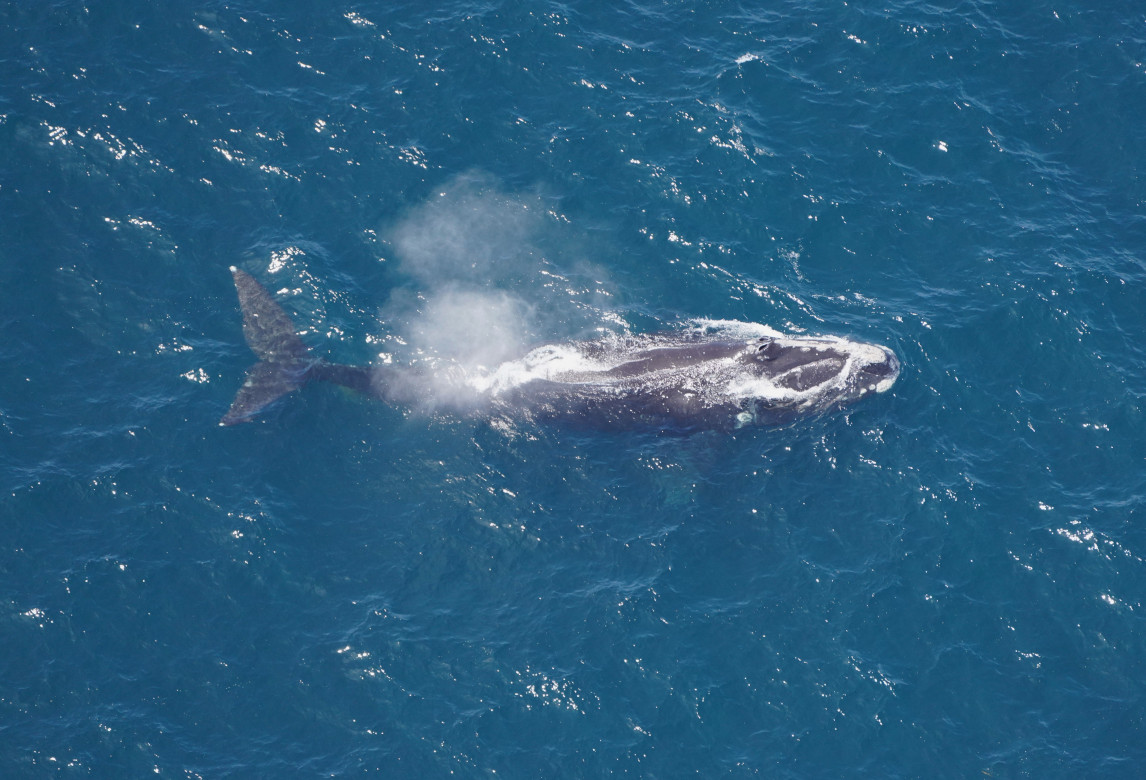
During the late spring and summer months, right whales leave spring feeding habitats, such as Cape Cod Bay and the waters south of Martha’s Vineyard and Nantucket, in search of other foraging areas. Where whales travel and forage in-between leaving these feeding areas and arriving in major summer areas such as the Gulf of St. Lawrence is not well known. In previous years as well as this year, right whales have been spotted off New England near the Continental Shelf break and the northern edge of George’s Bank during the spring and summer.
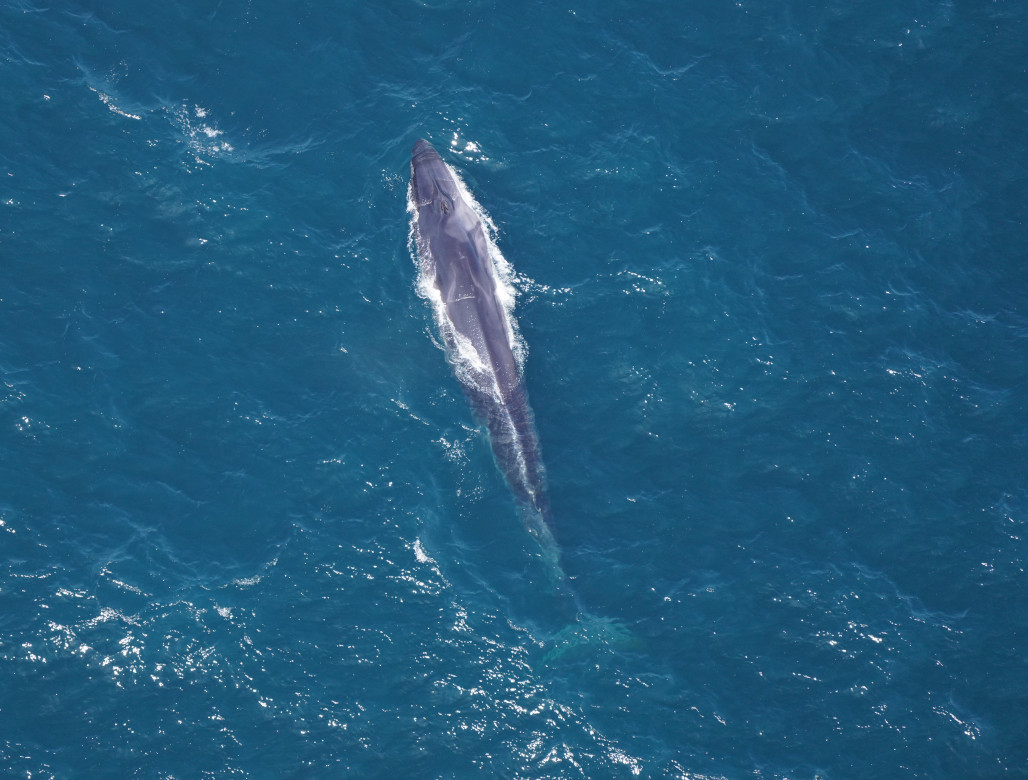
As we continued east to Oceanographer Canyon, the largest of the Monument’s three canyons, we spotted several endangered fin whales (Balaenoptera physalus). Shortly after starting our third trackline we saw our first endangered sperm whale (Physeter macrocephalus) of the survey near the top of the canyon. Sperm whales thrive in the productive waters of deep-sea canyons. As we continued, we spotted five more sperm whales in the span of just six minutes! Each of these individuals was swimming alone at the surface while catching their breath in between deep dives.
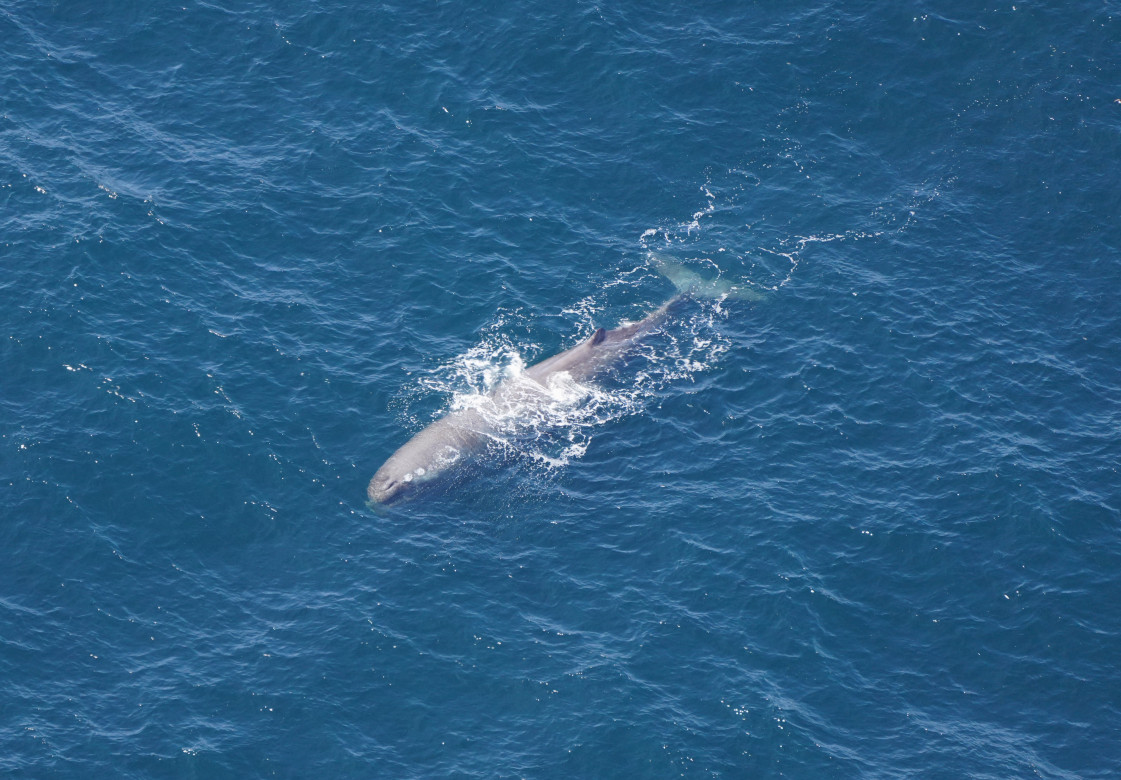
Sperm whales are capable of diving to 3,000 feet and can hold their breath for over an hour as they search for squid, their primary food source. While it was not unexpected to find sperm whales in Oceanographer Canyon, we were surprised at how many we were able to document considering how much time they spend on deep dives. On this Monument flight, we saw 10 sperm whales, which is the most we have ever seen on a single survey!
Speaking of deep divers, we were excited to see a group of five Cuvier’s beaked whales (Ziphius cavirostris), which hold the world record for deepest (nearly 9,800 feet) and longest (nearly four hours) dives! Similar to sperm whales, Cuvier’s beaked whales are drawn to submarine canyons in search of squid.
The group of Cuvier’s beaked whales we saw was traveling quickly at the surface, and one individual was nearly completely white, which made the group easy to track underwater. Male Cuvier’s beaked whales accumulate scars from the teeth of other males during fights, likely during competition for females, and older adult males often have a completely white face and back. The other beaked whales in the group had varying degrees of white coloration and scars.
/
…
As we continued our survey, we saw small groups of bottlenose dolphins (Tursiops truncatus) and pilot whales (Globicephala sp.) near the start of the fourth trackline. Aside from the large groups of common dolphins at the beginning of the survey, we were surprised that we only had small groups of other dolphin species. In between our fourth and fifth tracklines, we had another group of humpback whales and common dolphins. The animals’ behavior, including multidirectional movement, splashing, short dives, and milling at the surface, led us to think they were probably feeding on some of the abundant prey found here, similar to the aggregation on our first trackline.
On our transit through and west of the Monument on our way home, we saw one sperm whale, two fin whales, and a small group of Risso’s dolphins (Grampus griseus) before coming across some more right and humpback whales a few miles southwest of where our sightings west of the Monument were from the beginning of the day. We could also see some very distant blows near Welker Canyon where two research vessels were studying right whales in the area several miles west of the boundary of the Canyons unit of the Monument.
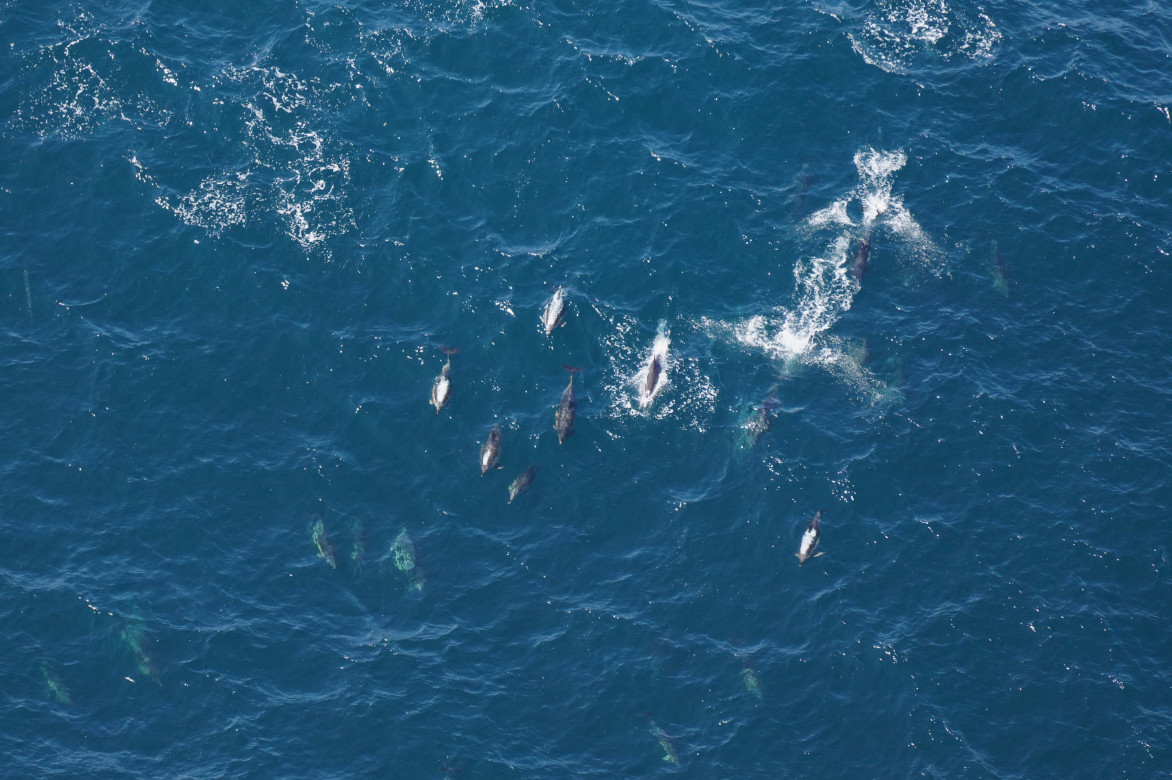
The species diversity in the Monument never ceases to amaze us, and the variety and concentration of baleen whales on this flight made it particularly memorable. The data collected during our Monument surveys support our team’s recent research showing that the Monument has some of the highest marine mammal biodiversity along the entire east coast. The diversity in and surrounding the Monument underscores the importance of marine habitat conservation to stem biodiversity loss and build resilience against climate change. To achieve the goal of conserving 30 percent of America’s lands and water by 2030, it is imperative that strong protections remain in place for areas like Northeast Canyons and Seamounts Marine National Monument, where future research, education, and ground rules for activities rely upon on a management plan currently set for release in September of 2023, as required by the Biden Proclamation.
This survey was made possible by the support of Conservation Law Foundation and the Natural Resources Defense Council. Right whale photos taken under NOAA research permit #25739.

